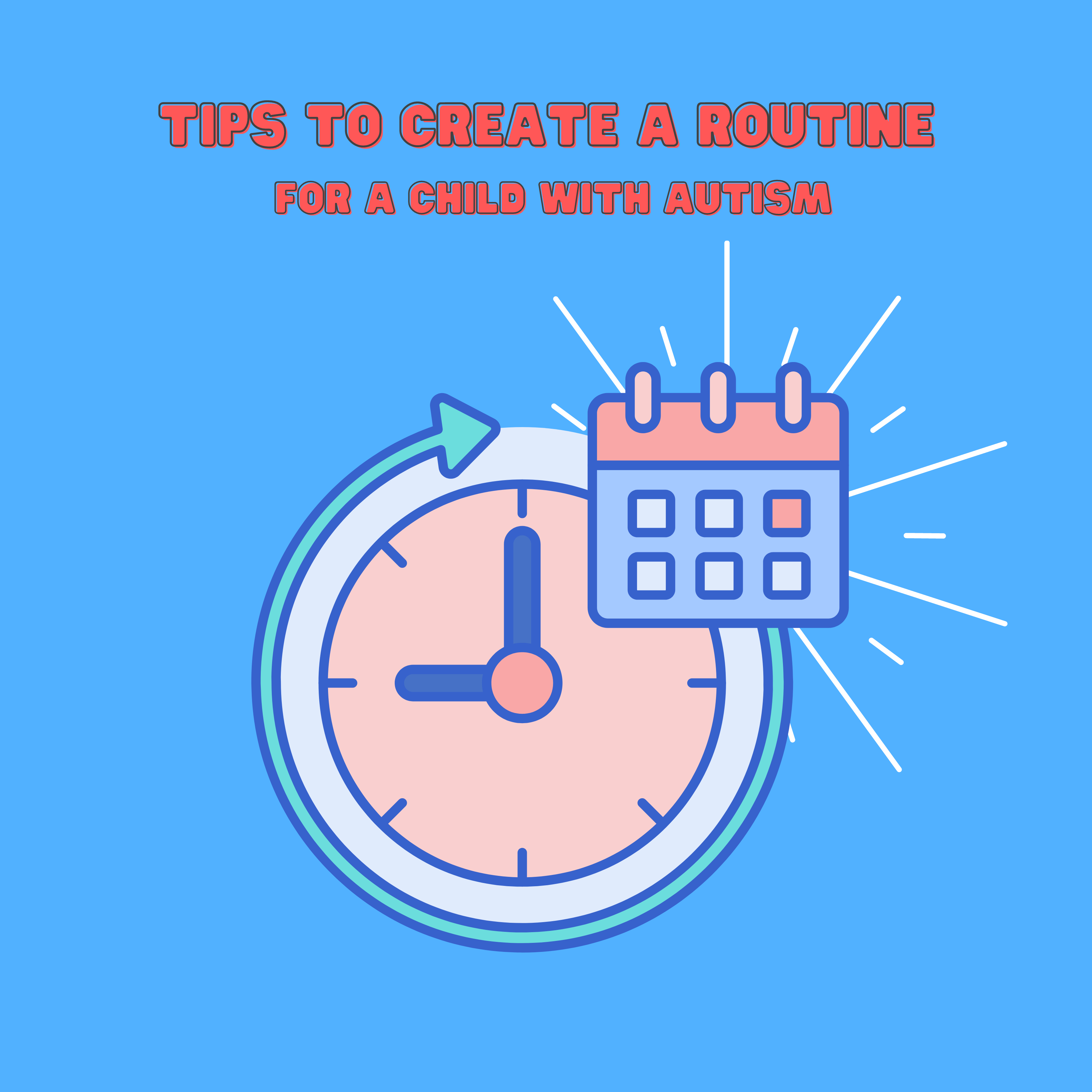In a world that often feels chaotic and unpredictable, routines can be a source of comfort and stability, especially for children with autism. For many with ASD, the predictability and structure provided by a well-established routine are not just comforting but essential for navigating daily life. Learning from my experiences with my brother, Andrew, I realized the importance of a routine. Andrew was diagnosed with autism at 18 months and he always struggled with transitions. With the implementation of a schedule that he created with me, he could refer to it everyday which allowed him to see what he was going to do next. Overtime his ability to transition between activities improved significantly and he was able to handle more unpredictable changes with ease.
Why Routines Matter
- Predictability: Many children with ASD find comfort in predictability. Routine provides a structured framework that can help reduce anxiety caused by the unknown.
- Creating a Learning Environment: Consistent routines can help create a conducive learning environment. Familiarity with what happens next allows for better focus on the task at hand, facilitating learning and skill development.
- Building Independence: Regular routines can create independence. By following a set routine, children with ASD can learn to create their own system and choose what they want to complete, which boosts their confidence and self-esteem.
- Managing Sensory Overload: Routines can help manage sensory overload, a common challenge for those with ASD. Knowing what to expect can reduce the intensity of unexpected sensory input.
- Easing Transitions: Transitioning from one activity to another can be challenging. A predictable routine can make these transitions smoother and less stressful.
Implementing Effective Routines
- Consistency is Key: Establishing a routine and sticking to it is crucial. Consistency helps reinforce the routine's benefits.
- Customization: Each child with autism is unique. Tailoring routines to their specific needs, preferences, and strengths is essential.
- Flexibility within Structure: While routines are important, it's also necessary to teach flexibility. Gradually introducing small changes can help individuals learn to cope with unexpected changes in a controlled manner.
- Visual Schedules: Many with ASD respond well to visual aids. Using visual schedules can help in understanding and following routines.
- Collaboration: Working together with caregivers, educators, and therapists in creating and maintaining routines ensures a consistent approach across different environments.
How to Create A Routine
Creating a routine requires thoughtful consideration and personalization. Here’s a step-by-step guide to help you create a routine that's tailored to their specific needs:
-
Assess Needs and Preferences: Begin by understanding the individual's specific needs, preferences, and challenges. Consider their likes, dislikes, and what works best in keeping them engaged and calm.
-
Set Clear Goals: Determine what you want the routine to achieve. Is it about improving specific skills, creating a schedule for homework, or providing structure to the day?
-
Start Small: Begin with a simple and manageable routine. Overloading with too many activities can be overwhelming.
-
Incorporate Essential Activities: Include key daily activities such as meals, homework sessions, education, playtime, and rest. Balance is key.
-
Use Visual Aids: For many with ASD, visual schedules are more effective than written ones. Use pictures or symbols to represent different activities.
-
Be Consistent: Once you establish a routine, stick to it as closely as possible. Consistency helps reinforce the routine's stability.
-
Review and Adjust: Regularly review the routine to see if it's working or if adjustments are needed. Be open to making changes based on the individual's response.
-
Involve the Individual: As much as possible, involve them in the creation and adjustment of the routine. This can increase their sense of control and cooperation.
Tips to Maintain a Fun and Engaging Routine
-
Incorporate Preferred Activities: Make sure to include activities that the individual enjoys. This makes the routine more appealing and engaging.
-
Celebrate Achievements: Acknowledge and celebrate when they successfully follow the routine or adapt to changes. Positive reinforcement can be highly motivating.
-
Introduce Variety within the Framework: While maintaining the overall structure, vary some activities to keep the routine interesting. This could be as simple as changing the play activity or the order of some tasks.
-
Create Rituals: Simple rituals, like a special handshake before starting a task or a unique way of transitioning between activities, can add an element of fun and predictability.
-
Stay Flexible: While consistency is important, being too rigid can be counterproductive. Be prepared to adapt the routine as needed, especially if the individual is having a tough day.
-
Encourage Social Interactions: If appropriate, include activities that involve interaction with others, like playdates or group activities, to make the routine more dynamic and socially enriching.
-
Use Technology Wisely: Consider using apps or devices that can make following the routine more engaging, like timer apps with fun alarms or interactive calendars.

